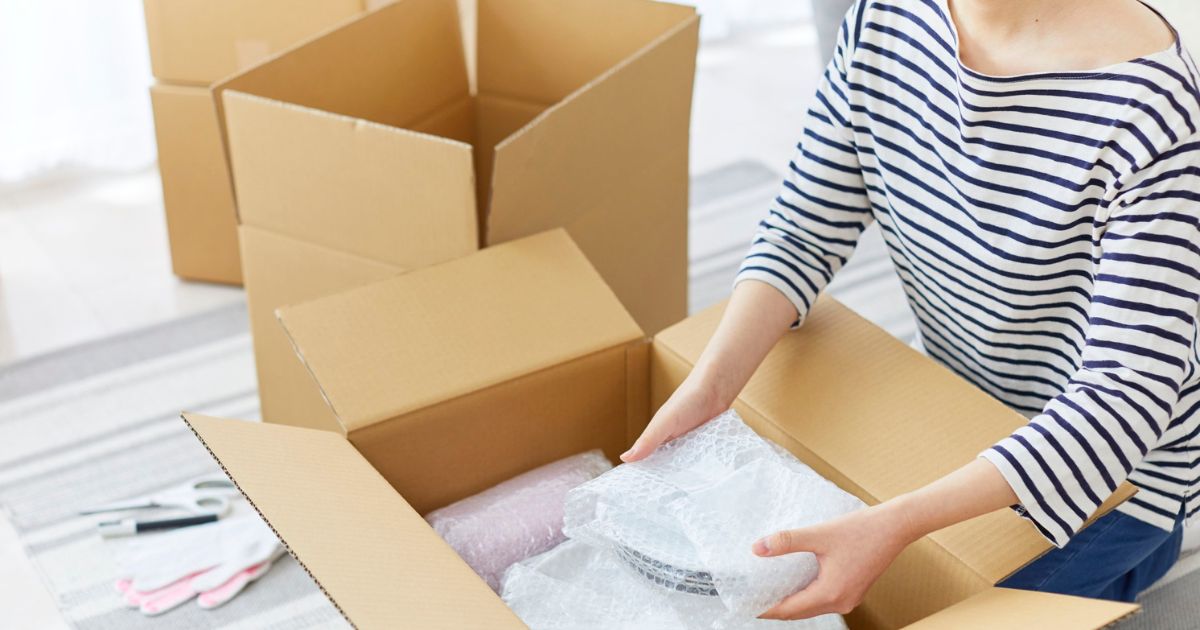
Not everything fits neatly into a standard moving box. Whether you’re relocating across Pittsburgh or across the country, you’ve likely stared at that grand piano, antique chandelier, or collection of oil paintings and wondered, “How on earth am I going to pack this?”
The truth is, standard packing methods don’t work for extraordinary items. Your grandmother’s china cabinet needs a different approach than your everyday dishware. That vintage guitar? It requires more than bubble wrap and hope.
Let’s explore creative packing solutions that professional movers use to protect items that defy the typical box-and-tape formula.
Understanding Why Unique Items Require Special Attention
Before diving into specific techniques, it’s important to understand what makes an item “unique” from a moving perspective. We’re talking about belongings that are:
- Irregularly shaped – Items that don’t conform to standard box dimensions
- Extremely fragile – Objects requiring protection beyond standard materials
- High-value – Pieces where replacement cost makes extra precautions worthwhile
- Sentimental – Irreplaceable items with personal significance
- Oversized – Large furniture or equipment that challenges conventional packing
Recognizing these categories helps you approach each item with the appropriate strategy and materials.
Creative Packing Solutions for Artwork and Frames
Artwork presents unique challenges. Canvas paintings, framed photographs, and sculptures each need tailored protection strategies.
For framed pieces: Start by creating a protective “sandwich.” Place cardboard corner protectors on all four corners, then wrap the entire frame in bubble wrap. The key here? Use painter’s tape instead of regular packing tape directly on frames. Painter’s tape won’t damage finishes or leave residue.
For larger artwork, consider building a custom crate using foam board and cardboard. Cut foam board slightly larger than your piece, create a foam “box,” and secure it with packing tape. This creates a cushioned chamber that absorbs shocks during transport.
Canvas paintings without frames require special care to prevent punctures or creasing. Never fold or roll valuable paintings. Instead, place cardboard on both the front and back of the canvas, then wrap in bubble wrap. For added protection, slip the wrapped canvas into a custom-cut foam board envelope.
Sculptures and 3D art benefit from the “nest” method. Choose a box significantly larger than the sculpture, create a nest of packing peanuts or crumpled packing paper at the bottom, place the wrapped sculpture inside, then fill all surrounding spaces with cushioning material. The goal is zero movement when you gently shake the box.
Musical Instruments: Preserving Tone and Structure
Musical instruments represent a perfect storm of fragility, value, and irregular shapes. Whether it’s a vintage Fender or a hand-crafted violin, these items need specialized handling.
String instruments (guitars, violins, cellos) should always travel in their cases when possible. But don’t stop there. Loosen the strings slightly to reduce tension on the neck during transport. Fill any empty space inside the case with soft cloth or bubble wrap to prevent shifting. Then place the cased instrument in a box with additional cushioning on all sides.
Keyboards and pianos present unique challenges due to their weight and delicate internal mechanics. For digital keyboards, remove any detachable legs or pedals and pack them separately. Wrap the keyboard itself in moving blankets secured with stretch wrap—never tape directly onto the instrument.
Upright and grand pianos absolutely require professional movers with specialized equipment. However, you can prepare them by locking the keyboard lid and wrapping the legs individually with moving blankets.
Wind instruments should have all keys and valves protected individually. Use pipe cleaners or soft cloth to protect key mechanisms, then wrap in bubble wrap before placing in the original case. The case then goes into a box with cushioning material.
Antiques and Heirlooms: Protecting History
Antique furniture, china, and collectibles often combine age, fragility, and irreplaceable value. Creative packing solutions here focus on customization and redundancy.
For antique furniture: Disassemble what you can, but photograph everything first. Label each piece and hardware packet with corresponding numbers. Wrap each component separately in moving blankets, paying special attention to carved details or inlays. Use cardboard corner protectors on any exposed edges or legs.
Drawers should be removed and packed separately—never leave them in dressers or desks during a move. Wrap drawers individually and pack them upright in boxes to prevent warping.
China and glassware benefit from the “cell pack” method. Create individual cells within a box using cardboard dividers. Each piece gets wrapped in packing paper, then placed in its own cell. Fill any remaining space with crumpled paper to prevent shifting. Always pack these boxes as “dish packs”—meaning you stack plates vertically (on their sides) rather than flat, which actually makes them less likely to break.
Antique clocks require special attention to pendulums and mechanisms. Stop the pendulum, secure it with bubble wrap or foam, and if possible, remove it entirely. Some antique clocks have removable weights—take these out and pack separately. Always transport tall case clocks upright, never on their backs.
Electronics and Appliances: Modern Complications
Today’s electronics combine value, fragility, and sensitivity to temperature and moisture.
For computers and monitors: If you still have original packaging, use it. If not, wrap each component in anti-static bubble wrap (regular bubble wrap can create static electricity that damages electronics). Place in boxes with foam or packing peanuts, ensuring at least three inches of cushioning on all sides.
Take photos of all cable connections before disconnecting anything. This simple step saves hours of frustration during setup.
Flat-screen TVs should never be laid flat—always transport them upright. Use moving blankets or specialized TV boxes if available. If using blankets, secure them with stretch wrap and place cardboard on the screen side for added protection.
Small appliances like coffee makers or blenders have multiple breakable components. Wrap the base and any glass carafes separately. Remove blades when possible and wrap them in bubble wrap, clearly labeled as sharp objects.
Sporting Equipment and Outdoor Gear
Sports equipment ranges from sturdy to surprisingly delicate, often with awkward shapes that defy standard packing.
Bicycles benefit from the “partial disassemble” approach. Remove the front wheel, pedals, and handlebars. Use pipe insulation foam to protect the frame and wrap in moving blankets. Secure everything with stretch wrap. The wheels can be placed in bike boxes or wrapped individually and secured to the frame.
Skis and snowboards should be paired with bases together, with cardboard between them to prevent scratching. Wrap in bubble wrap and secure with tape. Long, rigid items like skis can often serve as a base layer in a moving truck—just ensure they’re placed flat and secured.
Golf clubs travel best in their bags, but remove the clubs and wrap the bag separately. Bundle clubs together with bubble wrap, paying special attention to club heads. This prevents them from clanging together and causing damage.
Plants: Living Cargo Requires Living Solutions
Many people don’t consider that plants are one of the trickiest items to move. They’re fragile, sensitive to temperature, and technically alive.
For short-distance moves (under eight hours), plants can often make the journey. Water them several days before moving—not the night before—to prevent excess moisture and muddy soil. For transport, place plastic bags loosely over foliage to create a mini greenhouse effect, but poke holes for airflow.
Secure pots in boxes with packing paper to prevent tipping. Never pack plants in the moving truck—they should travel in climate-controlled vehicles. During winter months or long-distance moves, consider whether gifting plants to friends or selling them is more practical than attempting transport.
The Professional Advantage: When to Call the Experts
While creative packing solutions can help you tackle many unique items, some situations truly benefit from professional expertise. Consider professional packing services when:
- You’re moving high-value collections (art, antiques, instruments)
- You have oversized items requiring special equipment
- Time constraints prevent proper DIY packing
- You lack confidence in protecting certain items
- You’re making a long-distance move where items face more handling
Professional movers bring specialized materials, years of experience, and often insurance coverage that protects your unique items in ways DIY packing cannot match.
Bringing It All Together
Creative packing solutions aren’t about finding shortcuts—they’re about matching the right protection strategy to each item’s specific needs. That antique mirror isn’t just glass in a frame; it’s a fragile surface attached to aging wood that expands and contracts with temperature changes. Understanding these nuances helps you choose appropriate materials and methods.
Start your packing process early, giving yourself time to gather specialized materials and develop a strategy for each unique item. Take photos of valuable items before packing—this documentation helps with insurance claims if damage occurs and aids in proper reassembly.
Remember that no amount of creative packing can overcome poor handling during transport. Clearly label all boxes containing fragile or valuable items, and when possible, transport your most precious belongings in your personal vehicle where you maintain control throughout the journey.
Ready to Protect Your Unique Items?
Moving unique and valuable items doesn’t have to be stressful. Whether you choose to pack everything yourself or need professional assistance with your most treasured possessions, having a solid plan makes all the difference.
At Don Farr Moving & Storage, we’ve spent over 40 years helping Pittsburgh families protect their unique items during moves of all sizes. Our team understands that your antique piano, art collection, or grandmother’s china represents more than just objects—they’re pieces of your story.
Get a free quote today and discover how our professional packing services can give you peace of mind during your next move. Whether you need full-service packing or just want guidance on protecting your most valuable items, we’re here to help make your move as stress-free as possible.


